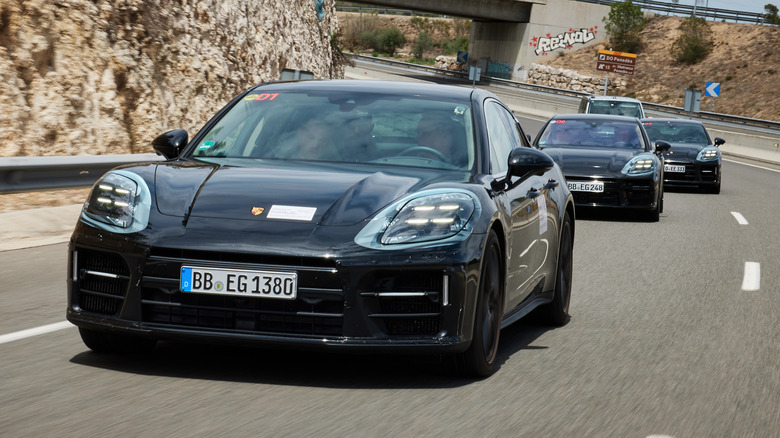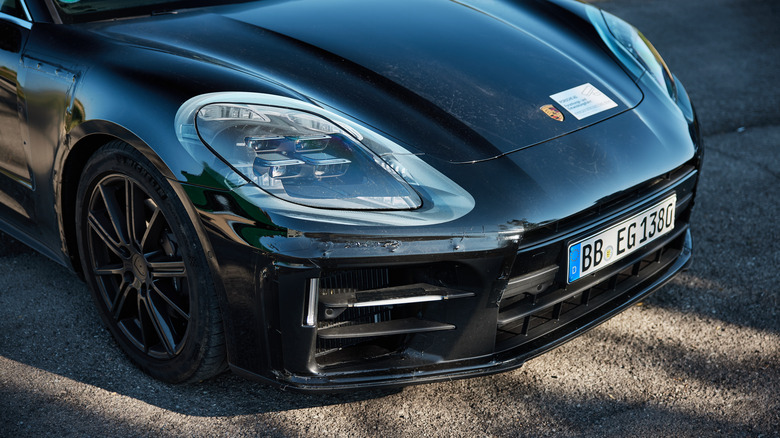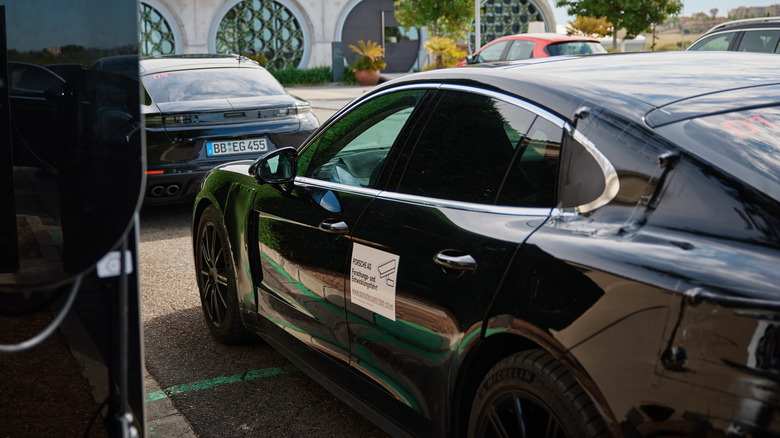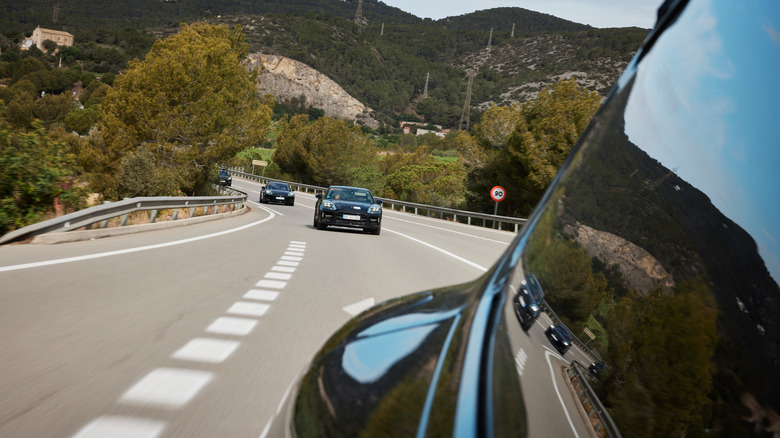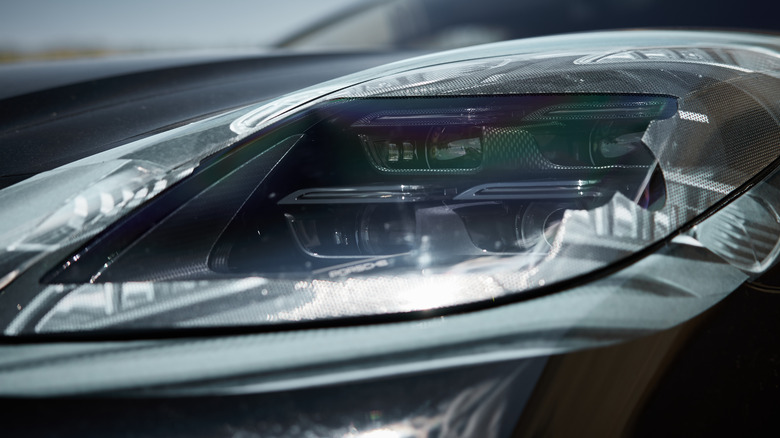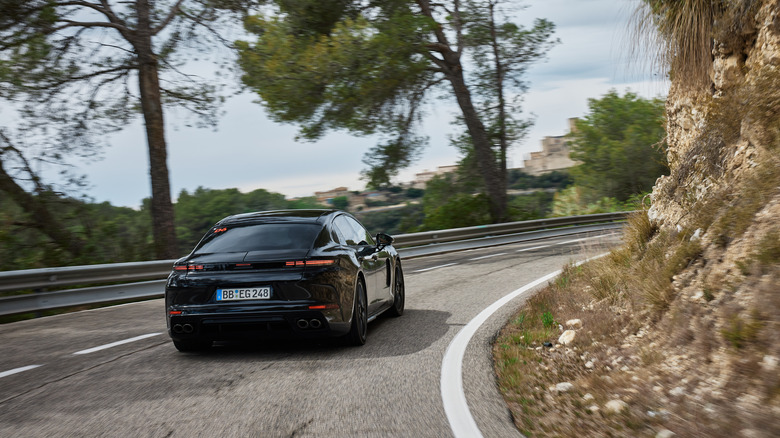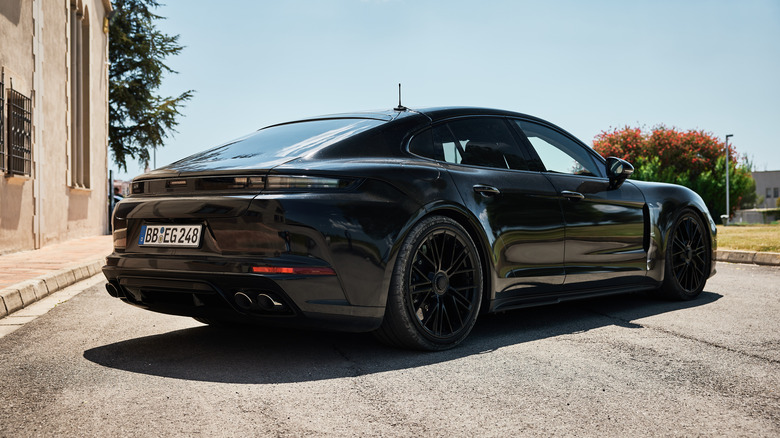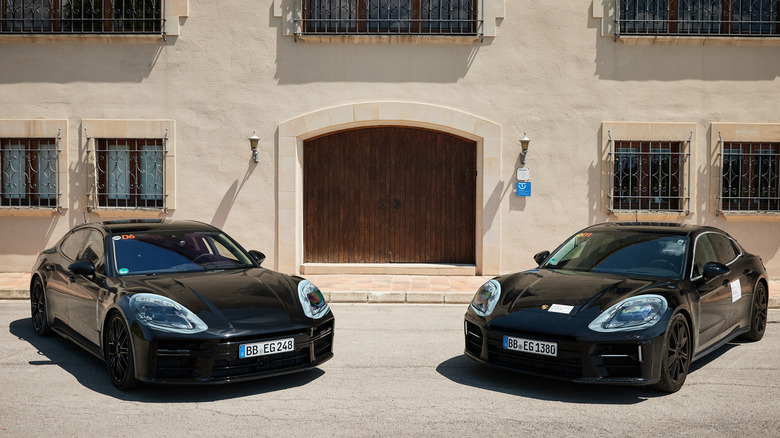2024 Porsche Panamera Prototype First Drive Review: Cruise Controller
It's hard to believe that it's been 14 years since Porsche brought its first sedan to the market, the Panamera. That car was significantly refreshed in 2016 for the second-generation, and since then it's been joined by the Taycan EV. Now, Porsche is giving us an early look at a new Panamera, the third-generation, and it's learned quite a bit from its all-electric sedan sibling.
The new Panamera offers more speed, of course, but also more electric range from the E-Hybrid, more tech, more refinement, and even more silence. Porsche is just about to wrap up a three year development effort on the new car, and here's what we learned from a day behind the wheel of a development prototype.
The sound of silence
The first thing the Panamera has learned from Taycan is silence. In the name of providing a more comfortable, more cosseting interior, Panamera engineers went through every corner of the interior with a microphone, searching for auditory leaks allowing stray decibels into the cabin. They reduced the number of holes in the firewall, replaced an aluminum chassis member with steel thanks to its better acoustic properties, and of course added even more sound-deadening foam to the mix.
The result is a car that maybe doesn't reach the same levels of silence as the Taycan, but is still remarkably free of unwanted noise. However, spring a little extra money for the optional sport exhaust, and you'll have no shortage of sound of the good variety. The twin-turbo V8 on the higher-spec Turbo E-Performance model has a wonderfully deep growl that comes out when the exhaust is opened. It's also been revised to boost efficiency and reduce emissions.
Those not needing all that power can still opt for a twin-turbo V6 engine, either unassisted or in E-Hybrid form. No formal power nor fuel economy ratings are available yet, but expect improvements in both departments.
More E-Hybrid range
The second thing the Panamera has learned is electric range. At least, that is if you opt for the E-Hybrid flavors of the sedan, available with either the base V6 or higher-end Turbo models. Porsche has now integrated a new electric drive motor directly into the transmission, and it's a more powerful one too, offering 188 horsepower on its own.
That's driven by a new battery pack that's bigger in terms of capacity but, thanks to some chemistry changes, hasn't grown by an inch. 25.9 kilowatt-hours is the new capacity, up about 50 percent from before. That should make for a corresponding increase over the current Panamera E-Hybrid's 18 miles of all-electric range, but Porsche isn't quite ready to quote formal figures yet.
Driven in all-electric mode, the Turbo E-Hybrid has some remarkable pep, launching away from lights as aggressively as you like. It's only when you're really dipping deep into the throttle that it needs to spin up its internal combustion cousin.
An EV-inspired interior
The third thing the new Panamera has learned is interior design. Actually, maybe for this one we should say copied wholesale, because things inside here look much the same as on the EV. That's a good thing — for the most part. The nicest improvement is a big, sweeping, curved gauge cluster with a half-dozen different view modes. That ranges from a five-gauge mode, big tachometer front and center per usual, to a minimalist distraction-free mode that basically only shows speed. You can also bring up night-vision, a simpler three-gauge mode, or a full-screen map if you like.
That sits next to a big, 10.9-inch widescreen infotainment screen that itself, optionally, sits next to another display of the same size exclusively for the passenger's use. This display uses privacy tech to prevent the driver from seeing it, meaning that it can be used for anything the passenger wants, even streaming movies.
No streaming partners are yet confirmed, but Porsche did have ScreenHits TV running on one of the prototype cars, which aggregates a number of other streaming services. And while we'd love to show you pictures of what all that looks like, sorry to say Porsche isn't quite ready to reveal the Panamera's new interior, so you'll just have to trust us for now.
Touch everything
The display layout is much the same as on the Taycan, and likewise many of the controls that formerly had buttons have now been moved into the UI. Want to open up that sport exhaust? It's in a sub-menu. Stiffen up the suspension? Sub-menu. You get the picture.
There are, I'm happy to report, physical buttons and toggles for most of the major HVAC-related controls, but even the vent aiming has moved into the touchscreen, again just like Taycan. This may be a minimalist step too far for many buyers.
Porsche's funny little gear selector also survived the tactile culling that's gone on in here, but it has moved up to the dashboard. However, the company's integrated twist control for enabling engine ignition is now gone, replaced — just as in the 2024 Cayenne — by a more familiar Engine Start button. It is, at least, still in the traditional Porsche spot: to the left of the wheel.
Refinement comes as standard
The final big change in the new Panamera is ride refinement. Now, it's hard to say that this was learned from Taycan because the outgoing generation of the Panamera is no slouch in this department, either. But the biggest focus for Porsche's engineers when it comes to driving character was to improve the Panamera's comfort and refinement.
To that end, adaptive air suspension is now standard for every model of Panamera. The standard setup is a dual-chamber damper similar to what's used on the existing car, though expanded to provide a greater spread between comfort and sport modes, the focus being the comfort side.
But, for those who want a bit more, Porsche is introducing a new, single-chamber air suspension that's optional for E-Hybrid models. This system requires a bit more energy to operate, only offered by the plug-in. Why does it need more power? Because this system can extend to its full height, a 50mm (two inch) rise, in less than a second.
The best seat in the house
That may sound like a carnival trick, but the intent of that suspension is to make the low sedan easier to enter and exit. More interestingly, the single-chamber suspension can be configured to keep the car level whether you're slinging through the corners or jumping hard on the brakes.
Again, the idea is comfort, making this a more stable, secure limousine for passengers. The resulting effect is actually a little disorienting at first. It's odd to feel yourself pulled perfectly sideways when going through a corner. But, I can definitely see this being a very nice thing for passengers who might be a bit sensitive in the nausea department.
Still, behind the wheel is always the best place to be in a Panamera. Diving through some amazing roads, charging over broken asphalt and surging up to speed on the highway, the third generation of Porsche's big-boy sedan is as poised, responsive, and as charming as ever. It's lost none of its surprising character in its journey here, only taking yet another step on its journey to becoming its best self.
Relevancy in a post-Taycan world?
So the new 2024 Panamera is great, but that leaves us with one question: is it still needed? After all, the Taycan is also great, also seats four or five comfortably, and does it all with style and great handling. So why does Porsche need a new Panamera? Well, good as it is, the Taycan will still only do a maximum of just under 250 miles on a charge according to the EPA (though, real-world testing constantly shows that's a pessimistic figure). The current Panamera will do nearly twice that on a single tank of gas, and of course can be refilled in just a few minutes.
For a car like this, that's significant. The third-gen Panamera is sporty and fun, yes, but it's also extremely comfortable, even more so than the current one. It's a car you'd definitely want to use to cover big miles, more miles than you can on a single charge of any of Porsche's EVs.
So, while the Taycan is a fantastic choice for those making many shorter trips, the Panamera still fills a need in Porsche's product portfolio, and so it lives on for another generation. But will this be its last? The reality is, the Taycan already out-sold the Panamera in the U.S. last year, and by a significant margin. If that gap continues to grow, the third act may prove to be Panamera's swan song.
